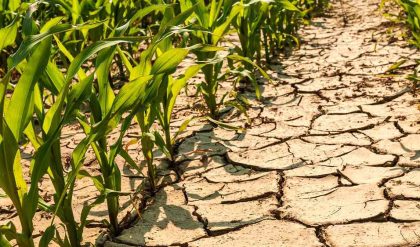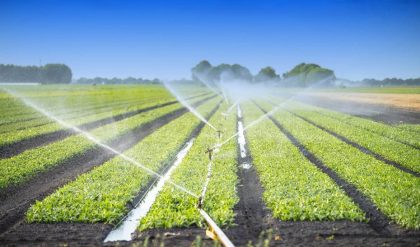Sugarcane is a tall perennial grass of the genus Saccharum, native to Southeast Asia and parts of the South Pacific. It can grow in warm temperate or tropical climates. The internodes of the plant stalk are rich in the sugar sucrose, and the plants can grow to a height of two to six meters in height. Every cultivar of commercially-grown sugarcane is a complex hybrid between several species and subspecies, all of which can potentially cross.
PLANTING CONDITIONS
Climate
Though sugarcane can be cultivated in temperate zones, productivity is much higher in tropical climates. A long, sunny, and hot (32 °C to 38 °C, 90 °F to 100 °F) growing season with moderate to high levels of rainfall (1100 and 1500 mm total), combined with a dry and cooler (12 ˚C to 14 ˚C, 54 °F to 57 °F) harvest season is ideal.
The amount of sugar accumulated in the dry weight at harvest is highly variable, and depends on the climate conditions during the various phases of the plant’s growth.

Soil
Sugarcane can grow in various types of soils – sandy, loamy, and clay soils, as well as both acidic and alkaline soils (within the pH range of 5 to 8.5). A well-drained loam with a pH of roughly 6.5 is absolutely ideal, but mechanical factors like soil compaction are much more consequential to crop success than soil composition and pH.
GROWTH AND HARVEST
Planting
Sugarcane is vegetatively or clonally propagated, in order to ensure consistent cultivar characteristics. Planting is usually the most expensive procedure in the growing season.
Stalk sections, called “billets,” “setts,” or “seed pieces”—containing one or more buds—are usually planted in late summer, rooting and developing into a stand over winter.
During this time, the rooting plants are very vulnerable to rot and predation, and are thus often sprayed with insecticide and fungicide before being placed in the seedbed.
Growing
Sugarcane can take between 9-24 months to harvest, depending on the climate. There is one harvest of the primary crop, and then 3-4 harvests of the “ratoon”, or regrowth.
In areas with less than 1500 millimeters meters of annual rainfall, the crop requires drip irrigation.
Ripening
Ripening lasts for about three months, in which time the stalk dries out and accelerate the synthesis and storage of sugar. Simple sugars like fructose are converted into sucrose during ripening.
Harvest
A cane harvester is used to cut down the full stalks, and cut them into smaller sections (around 30 cm). The harvester is trailed by a cane haulout, which collects the billets.




